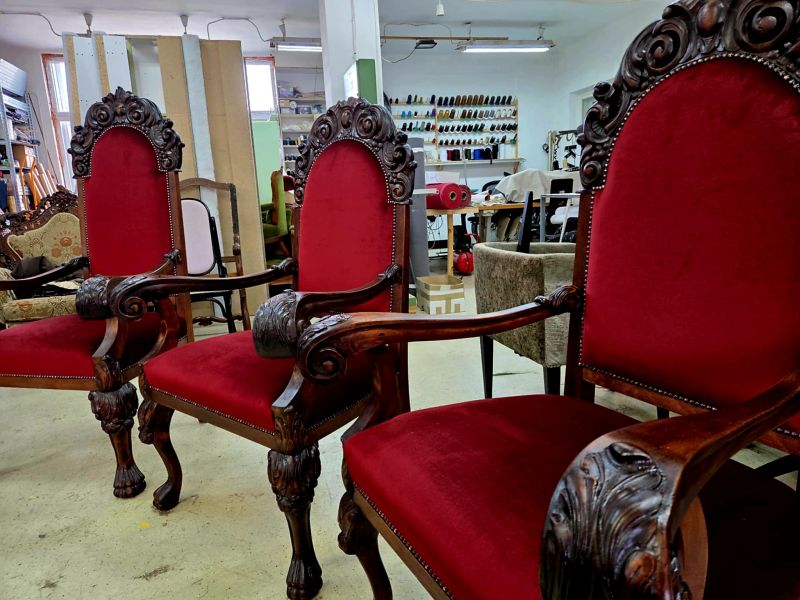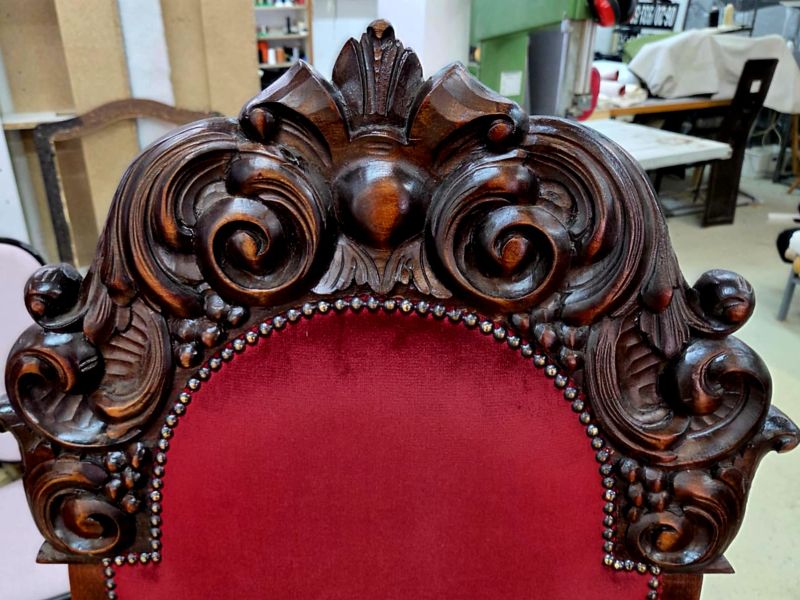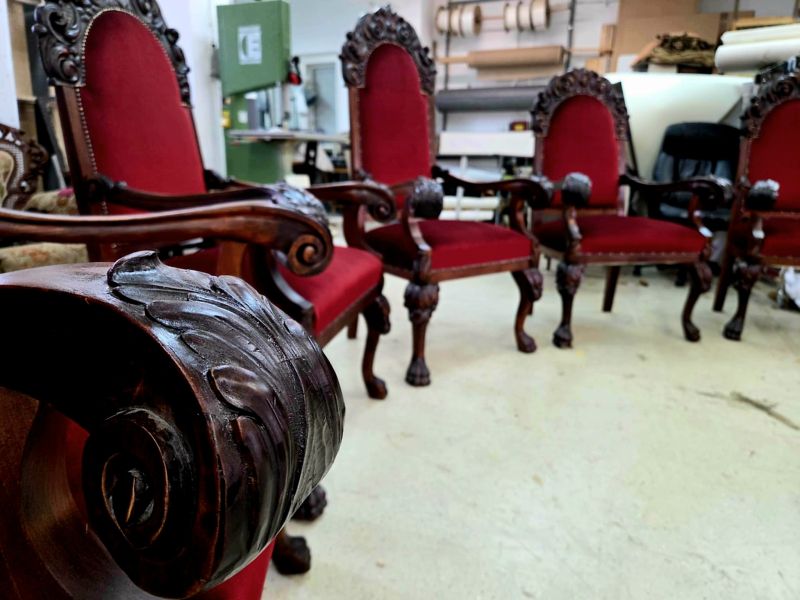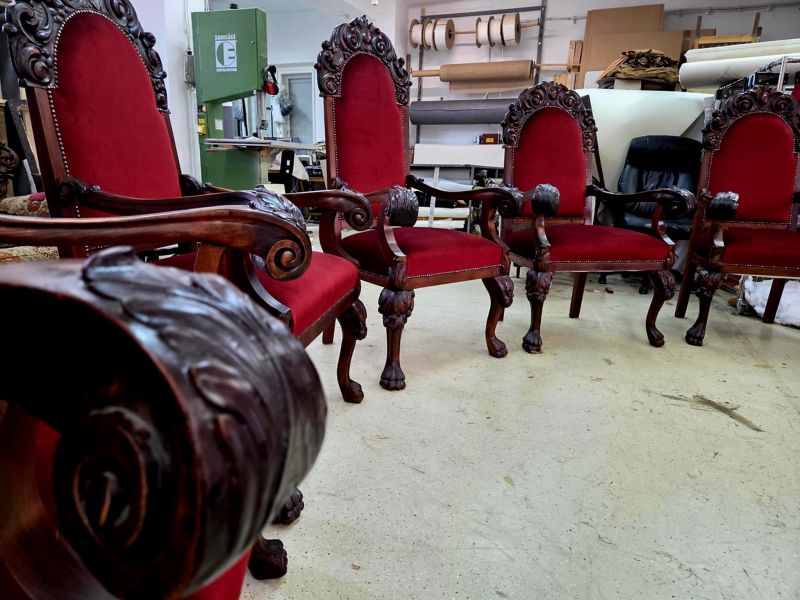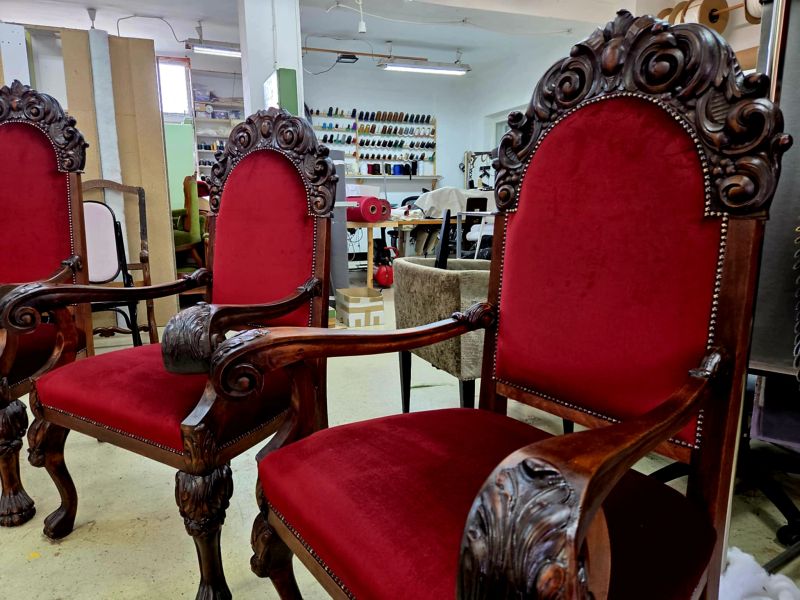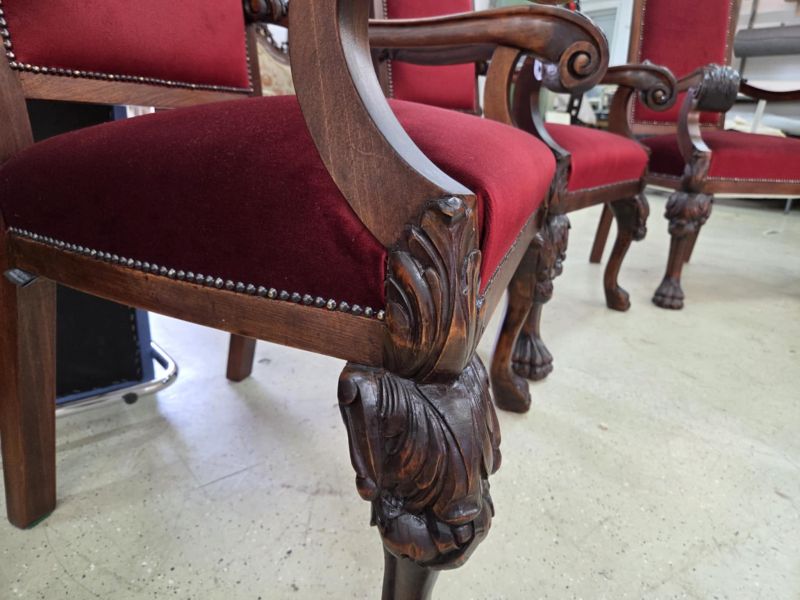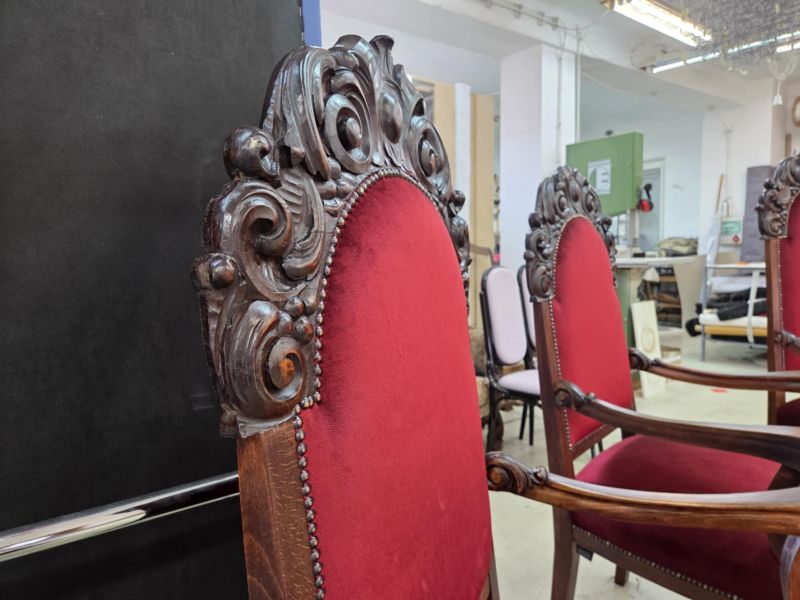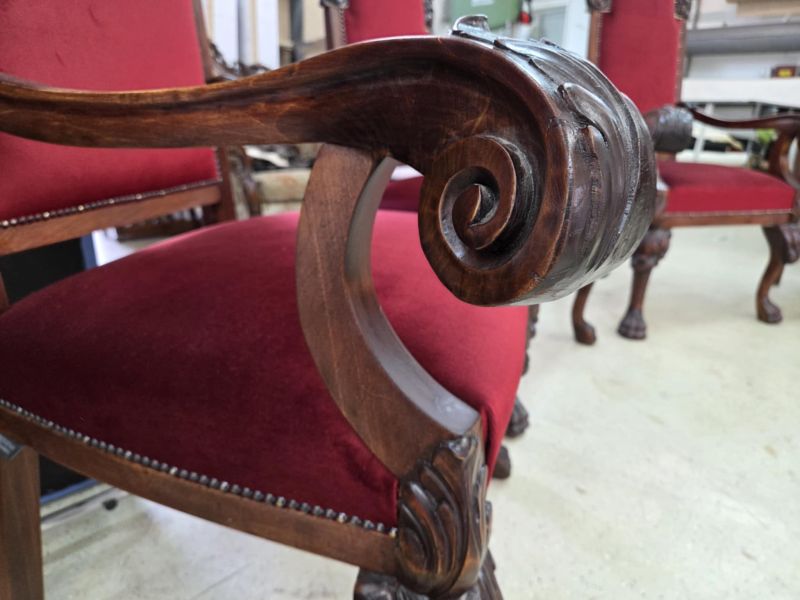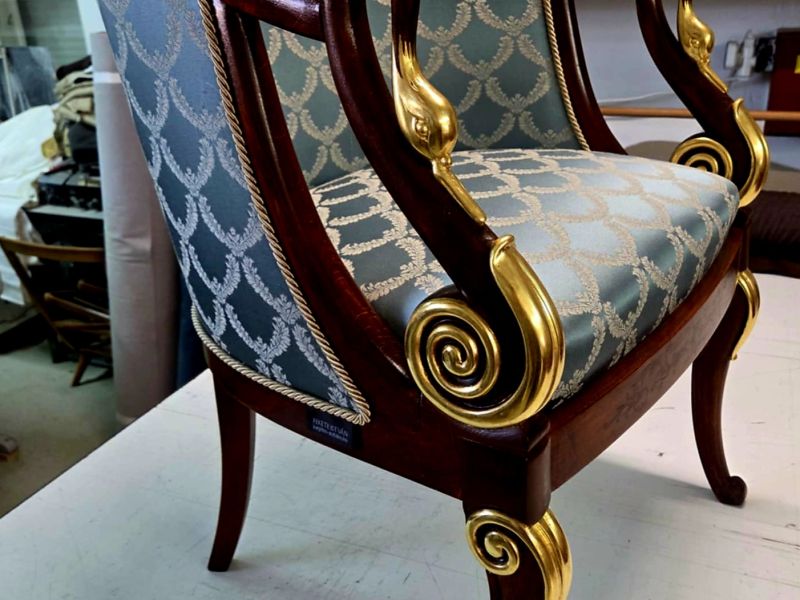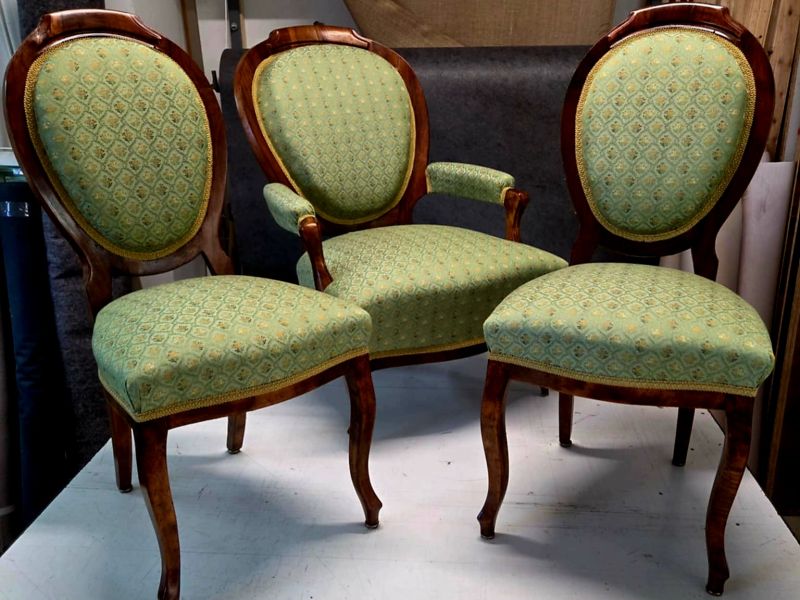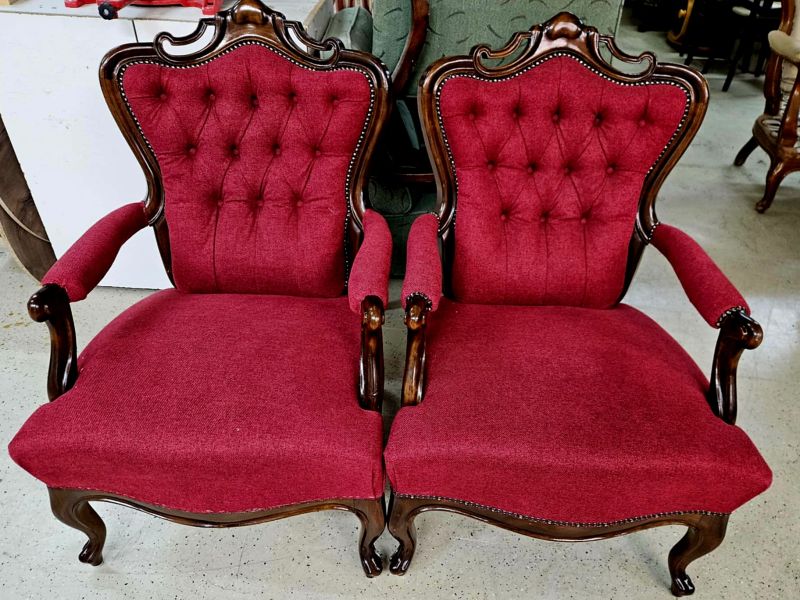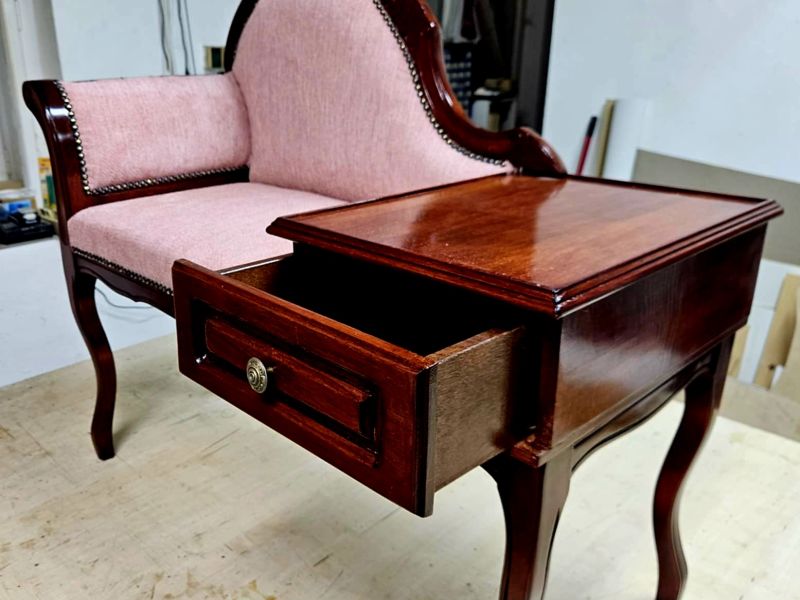The imposing throne chairs shown in the pictures are not only masterpieces of craftsmanship, but also worthy representatives of the style of a bygone era. These pieces evoke one of the defining styles of the 19th century, Neo-Renaissance furniture art, which was one of the most popular branches of the historicism era. This style spread throughout Europe from the 1850s onwards as a revival of Renaissance art.
The furniture manufacturing boom brought about by the industrial revolution of the time and the growing interest in historicist styles gave rise to this movement, which drew inspiration from Italian Renaissance design. Neo-Renaissance furniture is often richly carved, imposing in appearance, and was particularly popular in representative spaces such as castles, town halls, and upper-class homes. The throne chairs we have received are perfect examples of Neo-Renaissance furniture art. The richly carved backrests, the decorations at the ends of the armrests, and the slender lion's feet that can be found here and there all evoke the motifs of power and authority of the Renaissance period. The velvet upholstery and riveted padding bear the hallmarks of contemporary elegance. These chairs were not merely seating furniture – they were status symbols, often commissioned as unique pieces by aristocratic families.
This style of furniture has gained significant traditions not only in Western Europe, but also in Hungary. In our country, during the heyday of historicism, in the period of dualism (1867–1918), the Neo-Renaissance style became particularly popular in noble mansions, city palaces, and offices. One of the masters of Hungarian Neo-Renaissance furniture art was Endre Thék (1842–1919), whom I have had the pleasure of commemorating on several occasions. Many of his works can still be found in museums and historic buildings today—for example, some of the furniture in the Parliament Building was made in his workshop. Furniture by the German furniture maker Joseph Danhauser from Vienna has also been in our workshop, and I have also found a French example in the person of Édouard Lièvre, whose works represent the highest level of Neo-Renaissance furniture art.
Today, these pieces of furniture are considered particularly valuable, as they not only have aesthetic value, but are also part of our historical heritage. Using traditional upholstery techniques, we restored this beautiful collection, so that even a magnifying glass would be unable to find any flaws. Literally!!, since my client from Spain wanted her furniture's renovation with exceptional high standards, she expected -of course- highest-quality work and she carried out a very meticulous inspection indeed, when accepting my work. I am really very proud that she found nothing to complain about!



